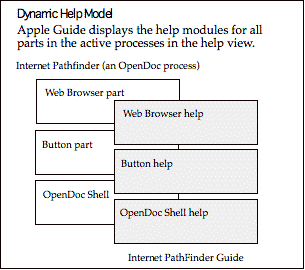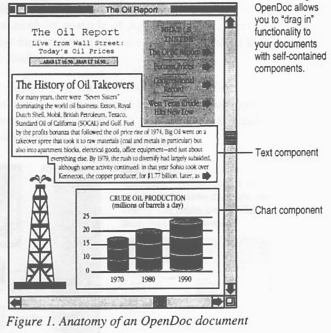UI Design + Management
When OpenDoc’s component-based architecture “broke” the AppleGuide online help engine, I initiated and managed a major UI revision to AppleGuide.
I developed the needs analysis, defined user requirements, then assembled a cross-functional team that developed solutions and made engineering changes.
Solutions included a dynamically assembled help “view” that let components bring their help own content and integrate it into help for an OpenDoc process.
For more detail, see OpenDoc: Building Help for a Component-Oriented Architecture.



